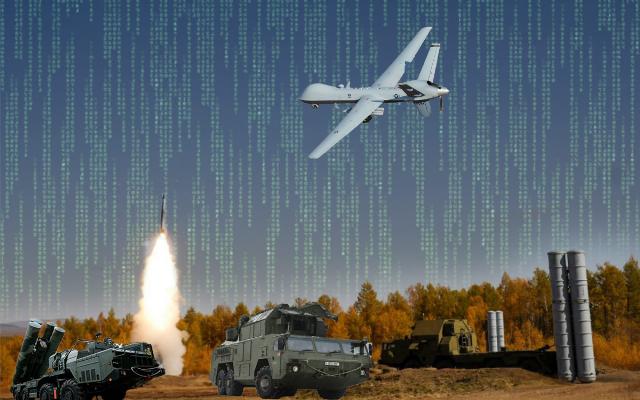The development of air defense systems is inextricably linked with the evolution of air and, subsequently, aerospace attack. The means of air attack and their methods of action were gradually improved. It is logical that the fight against aircraft has gone the same way. At first, it was not an independent and main task. For example, during the First World War, when single or small groups of aircraft operated, separate air defense units and units were created to combat them. But already during the Great Patriotic War, operational and operational-strategic structures were created in the Air Defense Forces to repel massive raids by Luftwaffe operational formations. For the first time in history and only in the USSR, air defense fronts consisting of several air defense armies were deployed.
According to experts, the most significant period in the history of local wars and armed conflicts of our time, in which there is a large-scale confrontation between the SVN and air defense systems, should be considered the 50s – 60s of the last century. This period was characterized by the preparation of the United States and its satellites for war against the Soviet Union. The basis of U.S. military doctrine since the early 1950s has been the strategy of "massive retaliation" adopted after World War II. According to it, the United States considered its "atomic air power" to be the main condition for achieving victory in a general nuclear war, and aviation was the main means. The growth of the American air threat required an increase in the combat capabilities of the Soviet air defense. Consequently, at that time, the country's Air Defense Forces began to play the role of a strategic deterrent factor.
Local wars and armed conflicts of that time were a kind of testing ground for the United States and the USSR. They used and tested the latest means of air attack and air defense. The experience of their combat use was studied for further improvement and development. According to experts, the first testing of new forms and methods of combat use of SVN and air defense systems – taking into account the qualitative leap in their development – occurred during the US war in Vietnam, in the period 1964-73.
At the same time, the basic principles were laid down in the theory of the use of air defense forces. For example, the increase in spatial scope and transience of combat in airspace required an increase in the depth of defense, and the need to destroy means of air attack – possible carriers of nuclear weapons determined the decisiveness of actions, the continuity of impact on the enemy, its timely interception and destruction. It was believed that the set goals could be achieved by superiority of forces over the enemy, massing of air defense means, maneuvering forces with continuous and reliable control of them, interaction of units and formations of all branches of the air defense forces during the battle.
Since then, as the relevant weapon systems have been improved and new ones have been developed, a number of fundamental changes have taken place within the framework of the development of the theory and practice of their use.
For example, the creation of high-precision long-range weapons (VTO DB) made it possible to hit critical enemy targets from remote lines without entering the area of action of fighter aircraft and the reach of anti-aircraft missile forces (SAM) air defense firepower. In addition, the presence of the WTO DATABASE in the enemy predetermined the transition to striking objects not as an "area", but as a set of "point" objects on the territory of each object by a polygon outfit of high-precision means.
There has also been a drastic reduction in the timing of the preparation and implementation of each action in the airspace to achieve the goals of aggression (conducting an EIT, applying MRAU, individual strikes, etc.). This became possible through the creation of a unified information space, as well as due to the increased effectiveness of weapons of destruction due to their robotization, increased accuracy and the use of artificial intelligence.
In general, the experience of local wars and armed conflicts of the 21st century has convincingly proved the need for changes in views on the organization of air defense, that is, the expediency of moving away from the positional principles of its organization and switching to maneuverable air defense (East Kazakhstan region). Its essence lies in the fact that it is necessary to "go from the enemy to the objects", that is, to defend those objects that are most likely to become objects of influence during the impact of the SVN (SVKN). In this case, the areal object should be divided into a number of "point" ones. This approach rationalizes the order of placement of air defense systems – not around an area object (city, industrial zone, positional area, etc.), but directly on the object (building, workshop, position, runway, checkpoint, etc.). Such tactics are currently being effectively used during a special military operation in Ukraine. In addition, an important factor is the activity, and even the offensive actions of air defense forces and means in combination with their suddenness. For example, the ambush actions of anti-aircraft missile units have successfully proven themselves in the course of their military operations.
In turn, the large-scale use of UAVs in both Syria and Ukraine has shown the need to create a unified intelligence and information network, the capabilities of which would ensure, among other things, timely detection, notification and target designation of air defense fire systems. In general, the inclusion of air defense systems as one of the constituent elements in a single reconnaissance and strike system (complex) is already a requirement of modern realities. In any case, no one doubts this in the Belarusian armed forces when working out the functioning of an interspecific automated reconnaissance and strike system.
Vladimir Vuyachich

